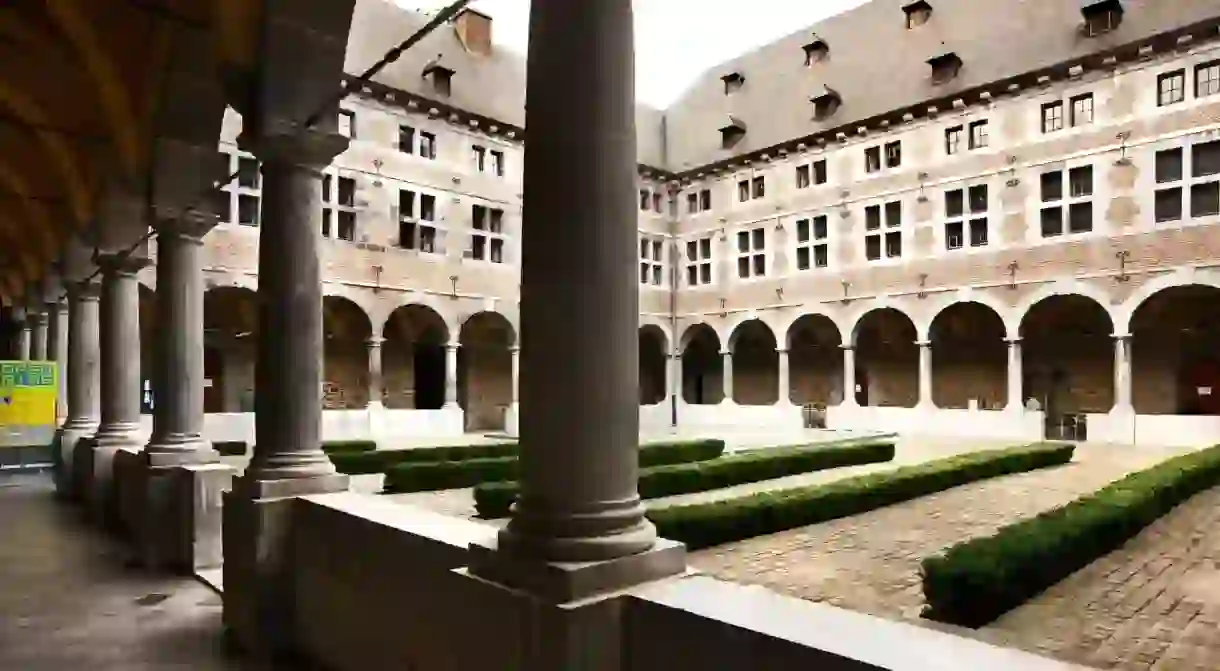A Guide to the Museums of the Ardennes Region, Belgium

Besides crisp air and picturesque landscapes, Belgium’s elevated Ardennes region has many museums on offer. From immersive war displays to temples worshipping singular geniuses, these nine places guarantee a cultural afternoon well spent.
Grand Curtius, Liège
Museum

One of Liège’s pride and joys, the Grand Curtius hits the mark on both location and collection. Expertly lit treasures from ancient Egypt, Rome and Greece as well as impressive glasswork and early firearms are on display in a renovated 17th-century mansion that overlooks the River Meuse. With more than 5,200 objects on display and an audio guide to escort you through thousands of years of history, you better clear half a day for this educational journey.
Musée de la Vie Wallonne, Liège
Monastery, Museum, Theater
Liège presents an excellent opportunity to delve into the culture of Belgium’s French-speaking half at the Musée de la Vie Wallonne. Set in the 17th-century Franciscan monastery in the heart of the historic centre, the museum runs through life in Wallonia from the 19th century to the present day. You and your family can catch live puppet performances in its traditional folkloric theatre.
Musée François Duesberg, Mons
To discover what the life of the French and Belgian beau monde looked like in the late 18th and early 19th century, step inside Mons’ most cherished museum. At the Musée François Duesberg, you’ll find the lavish jewellery, precious porcelain and decorative tableware collected by Baroness Betty Duesberg and Baron François Duesberg, the result of two lives dedicated to the decorative arts. Unique in the world is its exotic collection of more than 300 rare clocks and watches, all made between 1785 and 1815.
Maison Van Gogh, Mons
Museum
An essential stop on the route of painter Vincent van Gogh’s life was, somewhat surprisingly, the mining region of Borinage, close to Mons. His stint as a preacher in the village of Cuesmes lasted a little over a year, yet was essential in the artist figuring out his life’s calling. Today, the modest house the young Van Gogh lived in, the Maison du Marais, has been turned into an intimate museum that shows his thought process at the time, through reproductions of his letters and one of his original works. It’s clear that the hardships of the coal miners and farmers in the region would come to have an enormous influence on the painter’s later themes.
Bastogne War Museum, Bastogne
Museum

The Bastogne War Museum has reaped praise since its opening in the spring of 2014 for its immersive account of one of World War II’s worst battles on the Western Front. Throughout the exhibition, personal stories of Bastogne inhabitants and facts about the wider context of the war are woven together to tell the story of the Battle of the Bulge. Three multimedia scenes or “flashbacks” make you part of realistic wartime settings, such as a café filled with residents listening to the sounds of explosions outside, or the edge of the Ardennes forest where Allied troops are sheltered.
Bastogne Barracks, Bastogne
Museum
In the same vein, though even more enjoyable for military-gear enthusiasts, the Bastogne Barracks displays WWII tanks and armoured vehicles in active barracks of the Belgian military. It’s where the Allied troops were headquartered and where General McAuliffe of the 101st Airborne Division delivered his “Nuts!” line in response to the German demand for surrender. One of the rooms is filled with old pictures of the veterans who risked their lives, and you are guided around for free by actual Belgian soldiers.
Musée Félicien Rops, Namur
Museum
Born and bred in Namur, 19th-century artist Félicien Rops was too much of a local hero and unique figure not to have a museum dedicated to his work in the historic centre of town. In its permanent collection – an extensive retrospective of his life and art – you’ll bump into Rops’ fascination with the erotic, the taboo and the macabre, always keeping an ironic note and a light humoristic spark alive. One of the foremost examples of this is the museum’s best-known piece Pornocrates, in which a naked prostitute walks the streets with a pig on a leash.
Musée de Circuit du Spa-Francorchamps, Stavelot
Museum, Spa

The prestigious racetrack of Spa-Francorchamps, with its picturesque vistas and challenging turns, has been drawing race fans to the Ardennes since 1921, so naturally, a museum dedicated to what some drivers call “the most beautiful track in the world” was inevitable. In a curious mix of history and present-day technology, exceptional Formula One vehicles from the past to the present are on display in the vaulted cellar of Stavelot Abbey.
La Maison de Monsieur Sax, Dinant
Museum
Outside La Maison de Monsieur Sax in Dinant, Adolphe Sax, the inventor of the saxophone, lounges comfortably on a bench. His place of birth is more of an interactive experience centre than a museum. Here, you can run along its saxophone-shaped floor to hear different saxophone tunes and turn the pages of a book filled with love letters to the essential jazz instrument.













